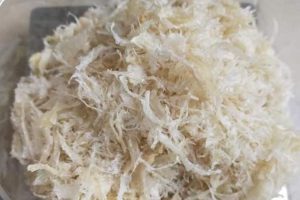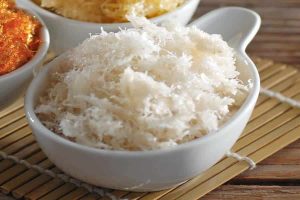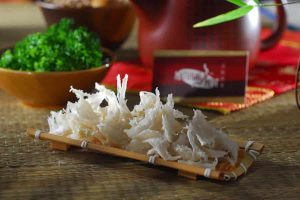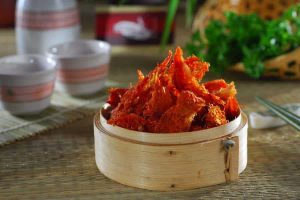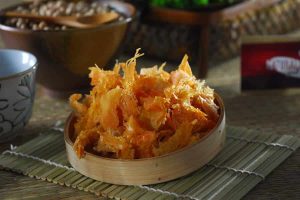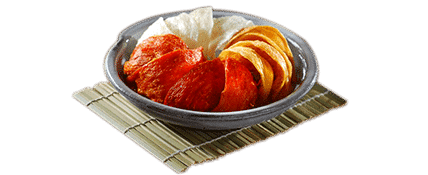How are Bird Nest’s Made?
These nests are made from swiftlets / swallow birds utilizing saliva that have been solidified and prepared so they’re edible. These bird nests are treasured in Chinese cuisine as they are rare, delicious and have high nutritional content. These bird nests have different grading / types, and this is determined by the size and the cleanliness of the birds nest.
Colors vary, with white being one of the most coveted as it is softer than the other colors and provides many health benefits including promoting smooth skin. While these nests are just becoming popular in the West, they have been part of Chinese culture and cuisine for over four centuries, often as bird’s nest soup.
Bird’s Nest Soup and Other Dishes
While these nests can be used in different ways, they are best known as bird’s nest soup. As the nest dissipates in water, they become gelatinous and then used as an ingredient in soup.
In Chinese cuisine it is called the sweet soup or savoury. There are many ways to prepare the dish, and as per the Suiyuan shidan, the gastronomy guide of the Qing Dynasty, the nest should not be prepared with anything oily or other powerful ingredients as it is delicate. The dish is also prepared in generous quantities in order to best appreciate its taste.
Aside from its exquisite taste, bird’s nests can also be turned into ingredients in other foods and dishes. This nest for instance, can be used for the preparation of bird’s nest boiled rice, bird’s nest congee and prepared with rice. These nests can also be used as ingredients for desserts such as bird’s nest jelly. Bird’s nest jelly is made when the nest is placed in a ceramic jar with a bit of water and salt or sugar, after which it is steamed.
Harvesting of the Nests
Various types of bird nests can be harvested, with the most in demand being the Aerodramus maximus (black nest swiftlet) and the Aerodramus fuciphagus (white nest swiftlet). Both white and red nests are renowned throughout China and the rest of the world not just because of their taste but a lot of people say they have benefited health wise.
The majority of these nests are made when the breeding season arrives. These nests are created by the male swiftlet and have the appearance of a light cup embedded to a wall. These nests are made from various salivary cement strands, and it is this mixture that provides the nest with plenty of magnesium, potassium, iron and calcium.
Back in the days these nests were harvested directly in the caves, in particular the caves at Niah and those in Gomantong in Borneo. Because of the high demand for these nests beginning in the 1990s, special structures have been used in their stead. To make harvesting easier, these nests are situated close to the sea as that is where birds are most likely to be found.
Supply and Demand
The United States and Hong Kong are among the biggest consumers of bird’s nests, and bird’s nest soups are very much in demand and can fetch a high price. Bird’s nests are weighed in kilograms, with red nests usually costing more than the white ones because they are rarer.
White colored nests are dyed red by many manufacturers, but experts have a way of determining if the nests are genuine red. Real red cave nests are hard to find, with most located in limestone caves in an island off Thailand. Premium Nest only supply the natural red birds nest which is harvested from the high-rise buildings / houses.
Due to the high demand for white bird’s nests, counterfeiters have tried to take advantage of the situation. To combat this threat, authorities in various countries have started using RFID technology, using microchips on the nests with details about transport, packaging, harvesting and so on.
The huge demand for bird’s nests has led to a thriving industry in particular the Indonesian province of North Sumatra. The many bird’s nets harvested and prepared there are exported to countries around the world including Hong Kong and the United States. However, the majority of consumers are still in China.
The best bird’s nests are handled and processed in special facilities to ensure consistency of quality, with effects analysis and failure mode among the techniques used to verify the authenticity of an edible bird nest.
There was a time when this delicacy was reserved for emperors and royalty, but now it is available for everyone. Demand for these nests is greater than ever, to the point that it makes up 0.5% of the GDP of Indonesia. Globally it is now a $5 billion industry.

